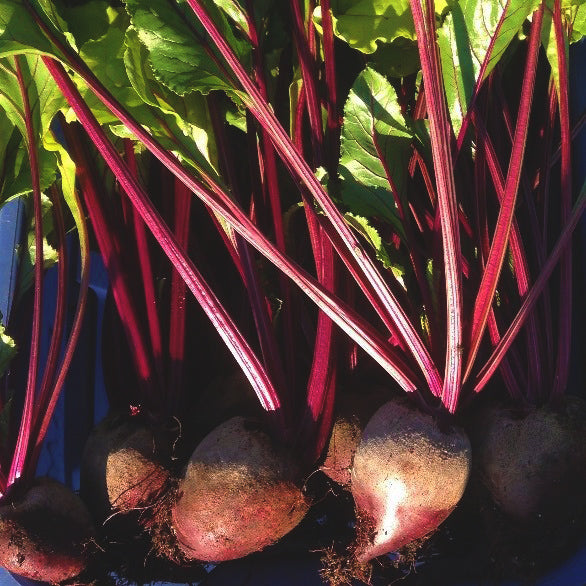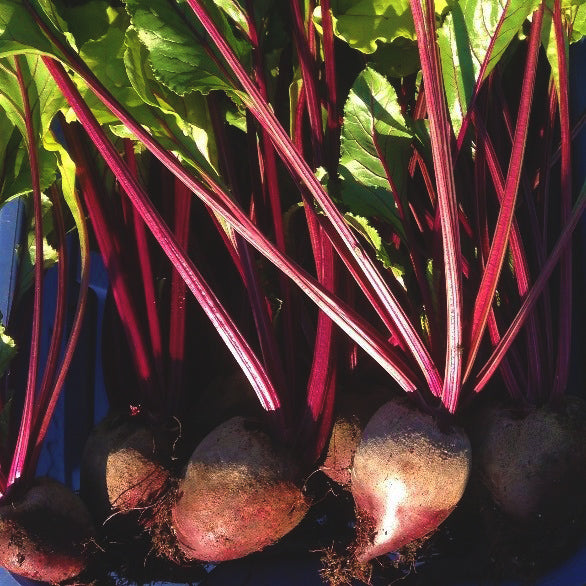My Store
Early Wonder Beet
Early Wonder Beet
Couldn't load pickup availability
A beautiful heirloom variety that produces round, smooth beets with tall, tender greens. Great for early season growing. Direct seed 1-2cm deep, 5-10cm apart, in rows 30cm apart, after last frost in spring. Thin to 10cm apart. 10-14 days to germination, 60 days to maturity.
Certified organic in British Columbia. IOPA # 1606, 1105, 1920.
How to Save Beet Seed
Fast Facts
Latin: Beta vulgaris
Cross Pollination: Swiss chard, other beet varieties
Isolation distance: 800 feet
Minimum Population Size (variety maintenance): 20-50 plants
Minimum Population Size (genetic preservation): 80 plants
Overwintering Beets
Beetroot is a biennial plant, so it will only produce seeds in its second year of growth. Allow plants to develop through the first season, planting early to ensure plants are healthy with large roots for overwintering. Where possible, overwinter beets in the ground, protecting from frost as needed. In colder climates, store beetroot stecklings in damp sand in a cold room until they can be planted out next spring. Select only beets with the most desirable traits, eg. big, well-formed roots, to grow out for seed.
Flowering and Seed Set
Shortly after plants begin growing in the spring they will bolt. The flowers are quite unremarkable and look like small clumps lining the flowering stalks, similar to the mature seed. Once the plants have set seed (it will be green at first but with a distinct lumpy, pitted texture), stop watering the plants to encourage seed maturation and drying. Wait until seeds are brown and dry then cut the stalks down and lay on a tarp somewhere warm with good airflow to allow the plants to dry down completely.
Beet Seed Cleaning
Thresh the seeds by laying the entire dry seed stalks on a tarp and stomping and shuffling on the plants to detach the seeds from the stalks. It’s important that seeds are very dry at this stage to prevent them being crushed by the threshing process. Shake the threshed material through a screen, allowing the seeds to pass through and the larger debris to remain on the top. Then, winnow using wind or a fan, pouring seeds from one container to another while allowing the lighter chaff to blow away.
If you are saving a smaller amount of seed or just have more time on your hands, you may prefer to wear clean gloves and roll the seed stalks between your hands to detach the seeds. This is more time consuming but creates less mess, and may be preferable for those with limited seed cleaning space or equipment.


